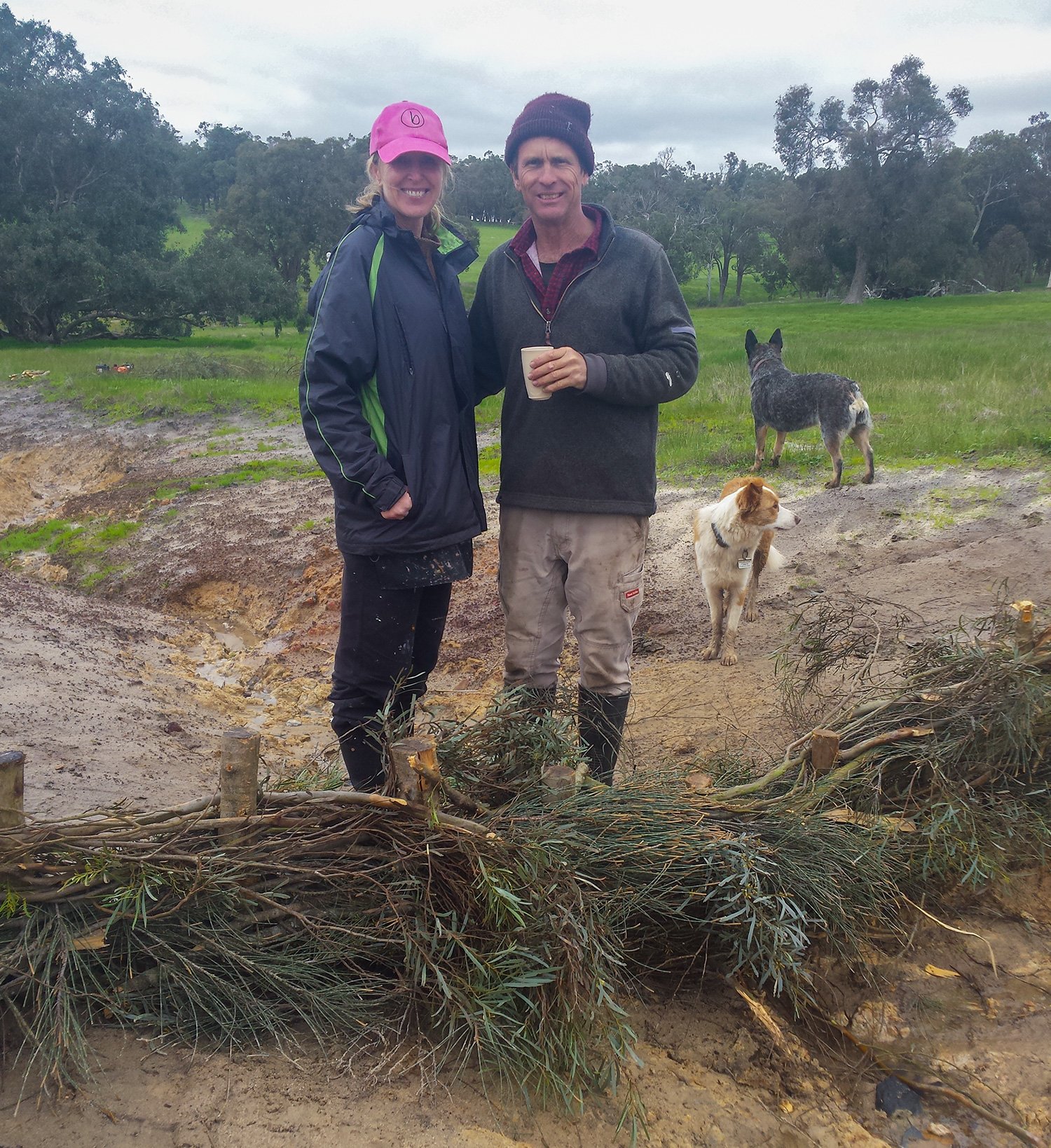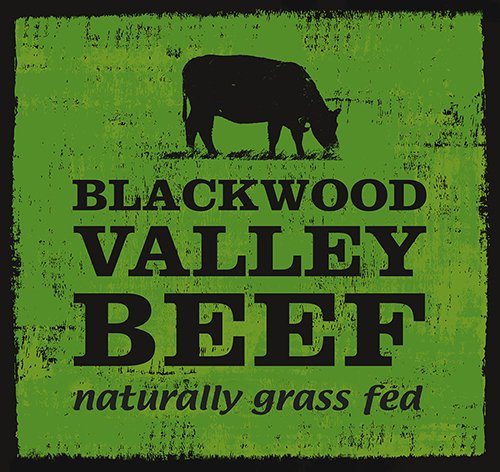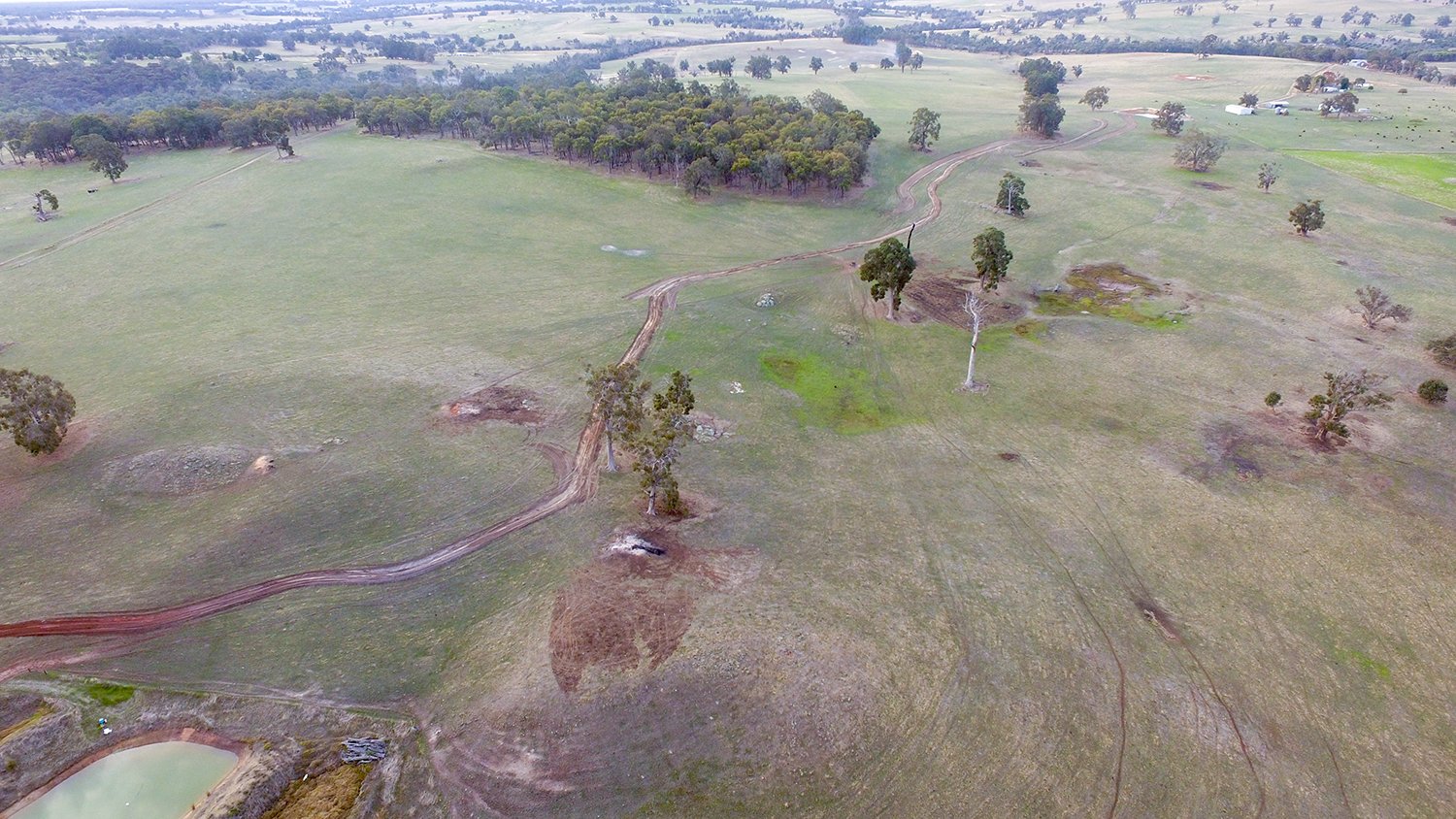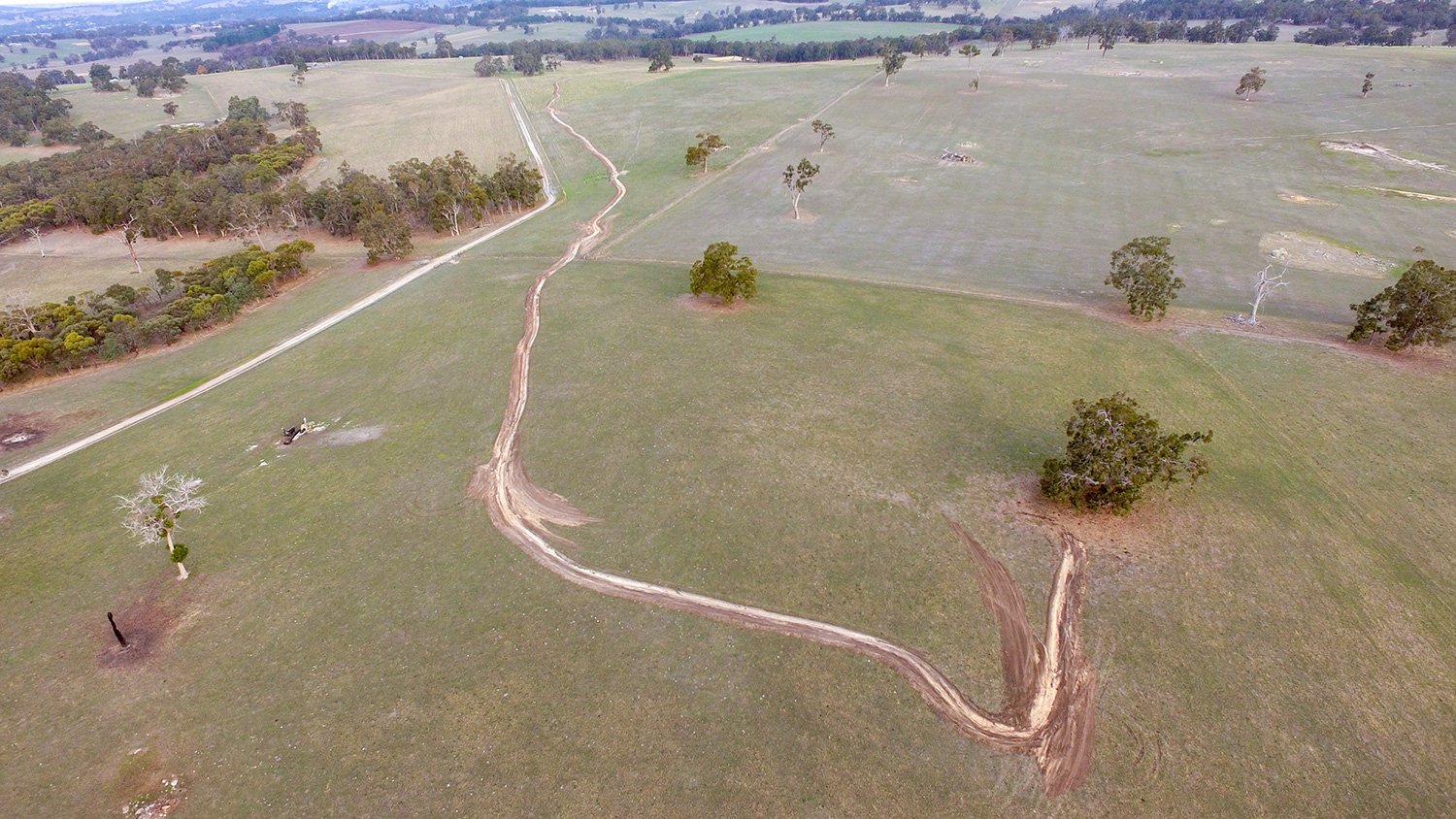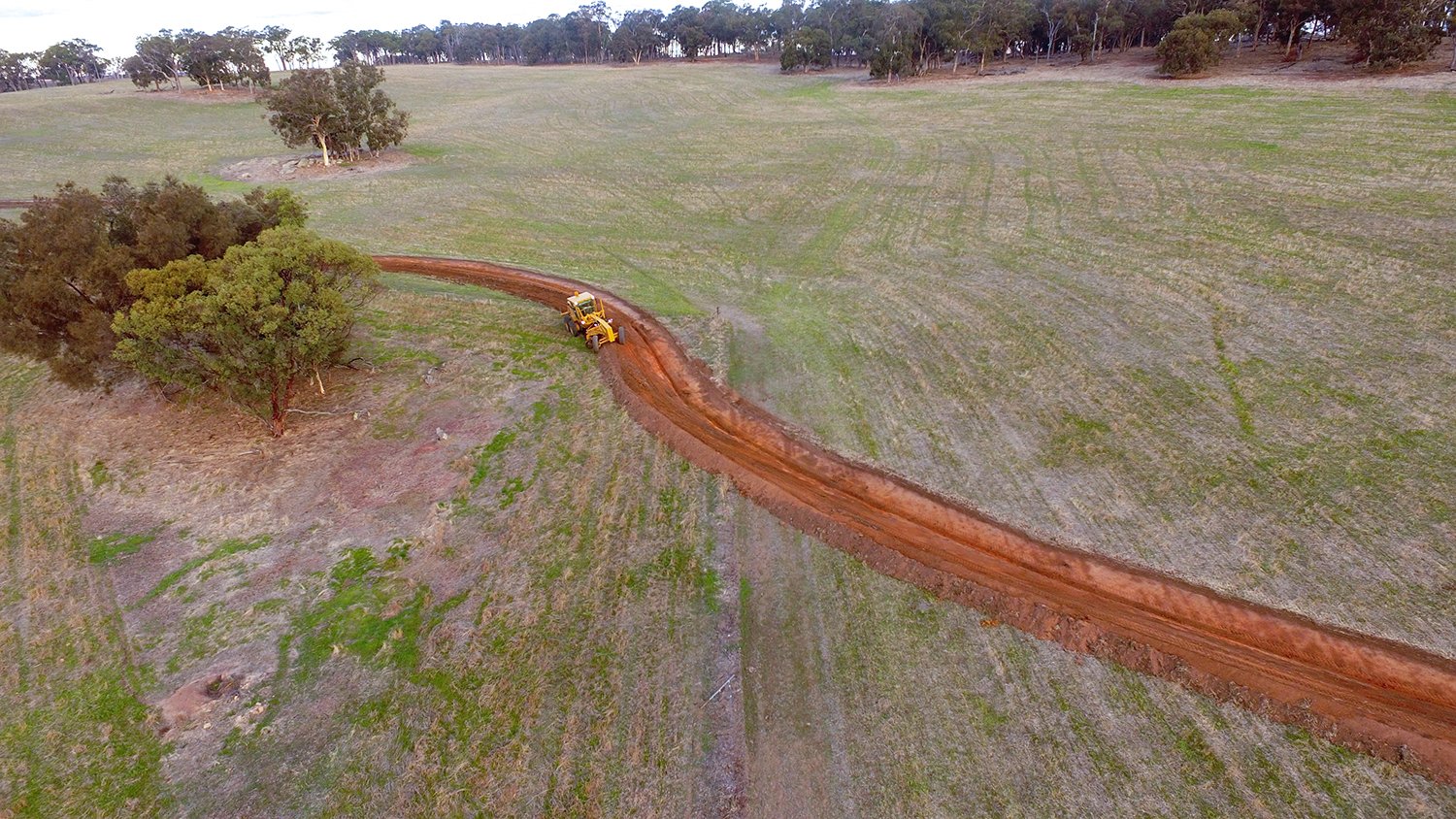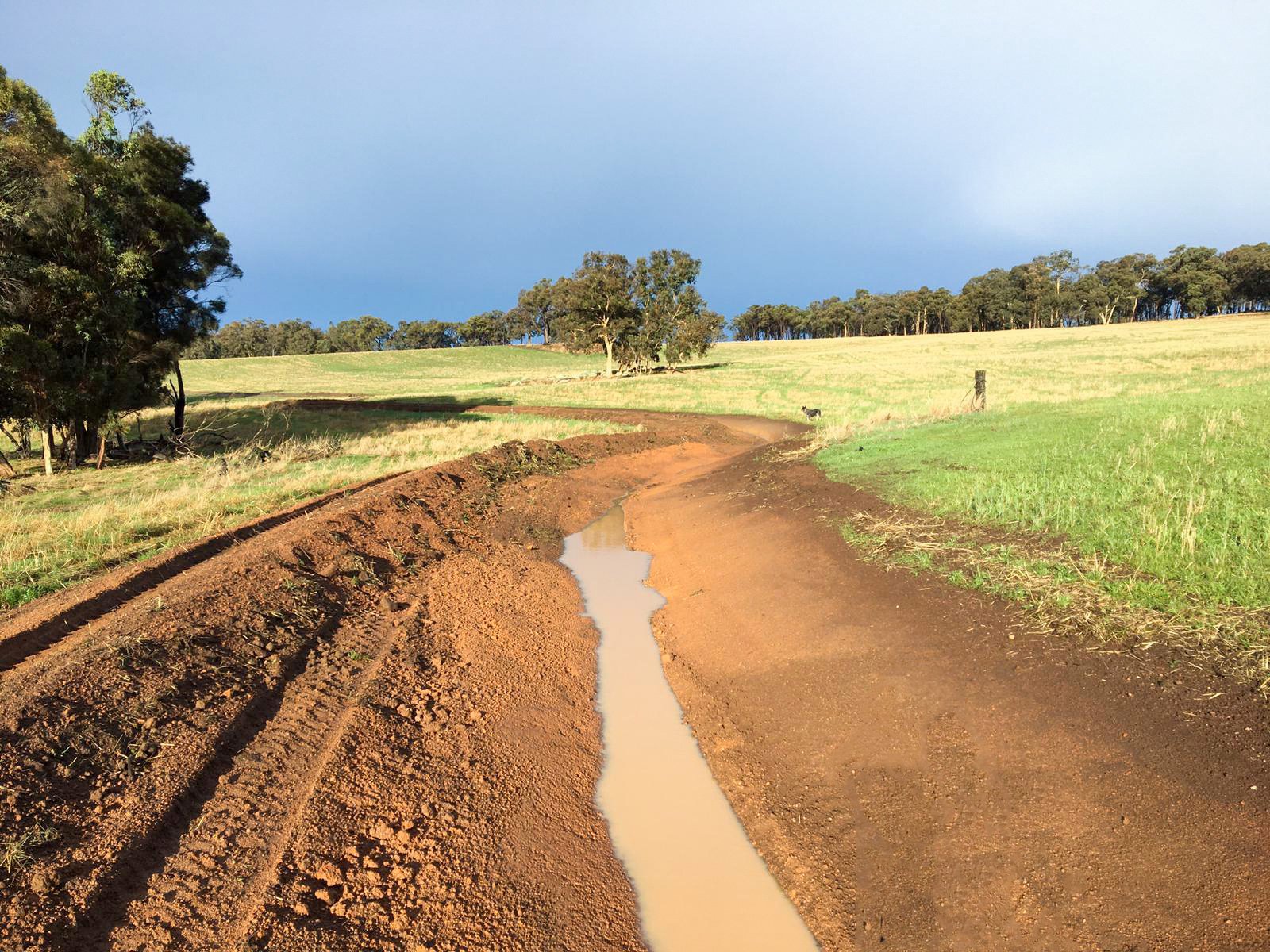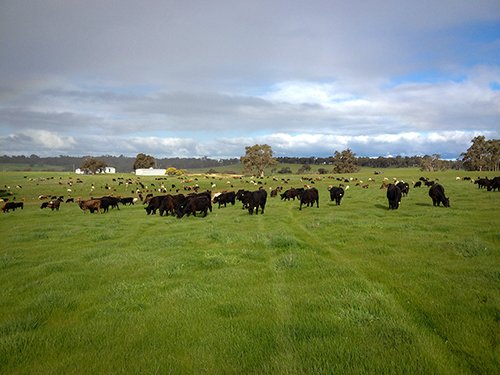L-R: Lori & Warren Pensini with one of their brushpack contours.
The panoramic view from the top of the Blackwood River Catchment gives spectacular views of the Boyup Brook district. For Warren and Lori Pensini, this landscape is home.
In 2001, Warren and Lori moved down from a cattle station in the Pilbara to ‘Paraway’ in Boyup Brook, taking with them cattle they had been faithfully managing.
Aerial imagery shows most of ‘Paraway’ had been cleared by the 1950s, with jarrah trees extensively harvested for local railway sleepers. The loss of vegetation has created challenges on the property with areas of waterlogging and seepage creating salinity issues. Coming from pastoral farming, the Pensinis were familiar with moderating stocking rates to suit the landscape. They bought this mindset down south, which was reinforced through attending an RCS Grazing for Profit course.
Warren and Lori noticed that the flavour profile of their beef had changed on ‘Paraway’ and were keen to try different management, part of which was organics. In the early 2000s there was a good premium for organic beef, which was the genesis for their beef brand Blackwood Valley Beef. They found this had positive impacts on their landscape but began to see productivity losses due to the constraint and expenses of running an organic system. Instead, they turned to nurturing the soil rather than their animals and focused on biological products and groundcover as they began their regenerative journey. This led them to working with Wide Open Agriculture and it’s food brand Dirty Clean Food. Warren is also the Livestock Operations Manager and Logistics and Supply Chain Manager for Dirty Clean Food, while Lori is a nationally recognised artist engaging with the environment and relationships in pastoral Australia in her works.
The Pensinis are now trialling landscape rehydration on ‘Paraway’, guided by TMI’s Landscape Planner Lance Mudgway. On-ground works have just begun, hear from Warren about their journey:
Do you think you have been successful in what you have been trying to achieve over the last 5-10 years?
Sometimes you feel that it’s two step forwards one step back. And that’s a seasonal thing. You’ll get a good year and think everything is going really well, and then you have a 2019 where we had a failed spring and then you realise it’s not working as good as you thought it was, and I suppose that was the next catalyst to where we are now.
We were thinking, what do we need to do to make this system more resilient in the longer term? We need to be able to stand up to those seasonal fluctuations, so when there’s a really bad season we’re not going to be as exposed because our system is more resilient. That’s the whole fundamentals around landscape rehydration and the work Peter Andrews has done – it’s about retaining much more of that moisture in the landscape so you can utilise it in the rough seasons. There needs to be broader change in managing the landscape in terms of the rehydration and the hydrological cycle.
I know it’s early days, but what are your thoughts on the activities done so far?
It’s really interesting, getting the trees in the ground you can actually see it all coming together now. When we put contours in, you can pick out what’s going on, but now it’s starting to infill with the trees it’s starting to come together in terms of how it’s going to function. Part of that is seeing some of the function with the contours; already where we were planting the trees there is definitely more moisture in the profile. If the contour wasn’t there it would be further down the landscape. It’s exciting to see that we are already making a difference, and that’s our goal – to retain more moisture on the farm and improve water quality. One of my goals for this project is, that every drop of water that leaves this property is fresh.
What are some of the major issues or hurdles to doing this work?
Cost is the number one. We are yet to prove that and that’s part of this project, but we are hoping to demonstrate an improvement in productivity and profitability. The productivity one is going to be super interesting, I’m convinced we are going to see productivity gains in some of the lower areas of the profile where there is waterlogging. There are some areas potentially in that central catchment we are really focused on, that have been terribly unproductive because they just get waterlogged for half of the year, and then they dry out in summer and nothing grows on them. The interesting one will be in the agricultural zones below where we are planting the trees, in terms of what productivity gains we will see. I’m not 100% sure how we are going to measure all of the change at this stage.
In some ways it is difficult to measure because there are other ecological benefits, and a lot of that we don’t really know about yet. The benefits to ecological outcomes is probably immeasurable at this point, but it could turn out to be a bigger gain than productivity gains. It is a leap of faith in terms of what we achieve in ecological outcomes and natural capital. There will hopefully be bigger picture changes we are going to see, and the lower landscape might become more productive and resilient. Get those salt scalds out of the equation. That’s why I come back to the water quality, because I think at the end of the day if we address the water quality then everything else will look after itself. Let’s measure this stuff and see where it all lands.
In terms of your future outlook, what are your hopes for the project and your property?
The environment and broader community are areas that I like to think we are going to make an impact. I remember when we had Jim Mackintosh and Justin Wolfgang here, we really hatched this plan 2-3 years ago. The one thing I said to them is why I thought this site was a good site for landscape rehydration – we are literally right up the top of the watershed of the Blackwood River. When TMI’s Peter Hazell came and did the workshops here, it didn’t take me long to think the same thing! We have a creek that starts on our property that’s right up the top of the catchment, and it’s interesting that when we were planting some trees today, it’s basically the highest point and you can see exactly why you would be planting trees there.
We are just a very small part of the whole Blackwood Catchment, but if we can make an impact here and demonstrate that broader environmental impact, and therefore societal impact in terms of what we are contributing to that river, if we can change that than we are doing our bit. There are probably a few hundred farmers in the catchment in the same position, so if we did this on other farms imagine the impact we could have. Imagine if marron (WA crayfish) lived in the upper reaches of the Blackwood River again. It’s always really difficult to measure those broader environmental and societal impacts, but as the phrase goes, “from little things, big things grow”.
This project is supported by funding from the Western Australian Government’s State NRM Program.
